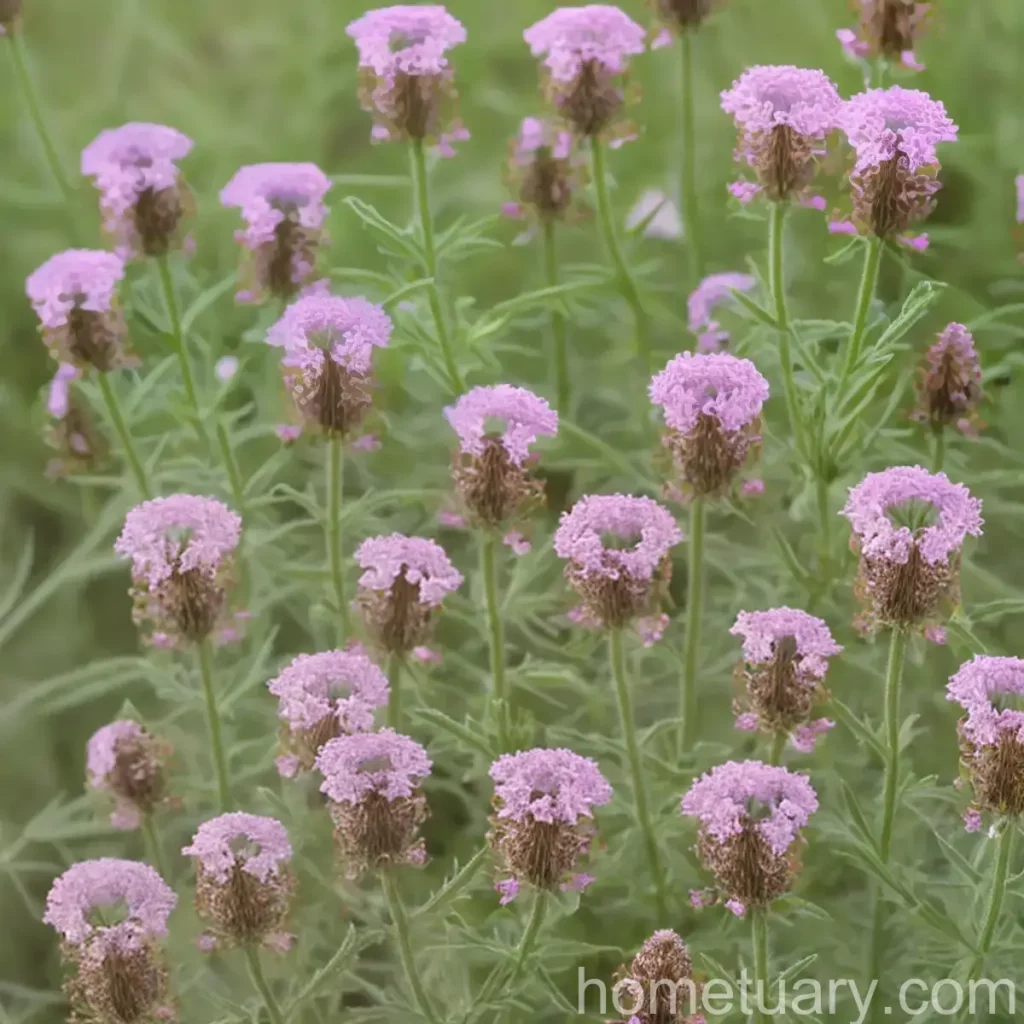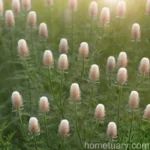Gattinger’s Prairie Clover (Dalea gattingeri)
Gattinger’s prairie clover, scientifically known as Dalea gattingeri, is a fascinating species that belongs to the clover plant family. This native prairie plant holds significant value in the realm of horticulture, conservation, and ecological balance. In this comprehensive guide, we will delve into the culture, uses, and care of Gattinger’s prairie clover, also known as Dalea gattingeri, and explore its significance in native plant conservation, gardening, and landscaping.
What is Gattinger’s Prairie Clover (Dalea gattingeri)?
Gattinger’s prairie clover is a perennial flowering plant that boasts elegant blooms and foliage. This native species is prevalent in North America, particularly in the central and southeastern regions of the United States. It is a member of the legume family (Fabaceae) and holds ecological importance as a nitrogen-fixing plant.
Key Takeaways – Gattinger’s Prairie Clover (Dalea gattingeri)
To understand and appreciate the significance of Gattinger’s prairie clover, let’s explore some key takeaways about this plant, its characteristics, and its ecological role:
– Plant Name: Gattinger’s Prairie Clover (Dalea gattingeri)
– Family: Fabaceae
– Habitat: Native to central and southeastern regions of the United States
– Ecological Role: Nitrogen-fixing plant
– Conservation Status: Considered endangered in certain areas
– Cultural Significance: Valued in gardening, landscaping, and native plant conservation efforts
Now, let’s explore various aspects of Gattinger’s prairie clover, from its cultural requirements to its ecological contributions.
Culture
Cultivating Gattinger’s prairie clover requires an understanding of its specific cultural needs, including water, sunlight, fertilizer, soil, and pruning. By catering to these requirements, gardeners and conservationists can ensure the successful growth and development of this valuable species.
Water
Gattinger’s prairie clover thrives in well-drained soil and is relatively drought-tolerant once established. However, during the initial phases of growth and in periods of prolonged drought, supplemental watering can help promote healthy development. Adequate moisture, particularly during the plant’s establishment phase, is crucial for robust growth and flowering.
Sunlight
As a native prairie plant, Dalea gattingeri exhibits a preference for full sun. When grown in a garden or landscaping setting, it is essential to provide the plant with ample sunlight to support its growth and flowering. A minimum of 6-8 hours of sunlight per day is recommended for optimal performance.
Fertilizer
Being a nitrogen-fixing species, Gattinger’s prairie clover has the exceptional ability to enrich the soil with nitrogen through its symbiotic relationship with specific bacteria. Therefore, it generally does not require additional nitrogen fertilizer. However, phosphorus and potassium may be beneficial for promoting healthy root development and overall plant vigor.
Soil
This species prefers well-drained, slightly acidic to neutral soil. It can adapt to various soil types, including sandy loam and clay loam, but it is crucial to avoid waterlogging, as excessive moisture can hinder its growth.
Pruning
Minimal pruning is typically required for Gattinger’s prairie clover. Deadheading the spent blooms can promote continuous flowering and prevent self-seeding, particularly in garden settings. Additionally, light pruning in early spring to remove any damaged or weak growth can help maintain the plant’s health and appearance.
Uses
Gattinger’s prairie clover offers a range of uses, encompassing ecological, horticultural, and medicinal applications. Understanding these uses is essential for appreciating the plant’s value and potential contributions across various domains.
Ecological Uses
As a native prairie plant, Dalea gattingeri plays a crucial ecological role in supporting pollinators, enhancing soil quality through nitrogen fixation, and contributing to the overall biodiversity of prairie ecosystems. When incorporated into prairie restoration efforts and native plant landscaping, it can aid in the conservation and enhancement of natural habitats.
Medicinal Uses
Traditional uses of Gattinger’s prairie clover include its medicinal properties. The plant has been historically used by indigenous communities for its potential medicinal benefits, which may encompass anti-inflammatory, antimicrobial, and other therapeutic attributes. Research into the pharmacological properties of Dalea gattingeri holds promise for uncovering its medicinal potential and exploring its applications in modern herbal medicine.
Horticultural and Landscaping Uses
In horticulture and landscaping, Gattinger’s prairie clover serves as a valuable ornamental species. Its graceful blooms, drought tolerance, and ecological benefits make it an attractive choice for pollinator gardens, native plant landscapes, and sustainable urban green spaces. Moreover, as a nitrogen-fixing plant, it can contribute to soil improvement and sustainable gardening practices.
Propagation
The propagation of Dalea gattingeri can be achieved through various methods, including seed propagation and vegetative propagation. Understanding the propagation techniques is essential for conserving and expanding the populations of this native prairie plant.
Seed Propagation
Seed Collection: The seeds of Gattinger’s prairie clover can be collected from mature plants during the late summer or early fall. It is important to harvest seeds responsibly, ensuring that an adequate portion is left to support natural regrowth and ecological balance.
Seed Treatment: Some seeds may benefit from scarification, which simulates natural processes that break the seed coat and enhance germination. Scarifying the seeds can be achieved through mechanical means or chemical treatment, following appropriate safety guidelines.
Sowing: The seeds can be sown directly in prepared seedbeds or containers, ensuring adequate moisture and suitable growing conditions. Germination typically occurs within a few weeks under optimal conditions.
Vegetative Propagation
While seed propagation is a common method for Dalea gattingeri, vegetative propagation techniques, such as division and cuttings, may also be employed to propagate selected cultivars or to propagate the plant in controlled environments.
Container Popularity
Given its ornamental appeal, ecological benefits, and adaptability, Gattinger’s prairie clover is gaining popularity as a container plant. When cultivated in containers, it offers opportunities for urban gardening, balcony greening, and versatile landscaping arrangements. The use of containers also enables controlled cultivation and conservation efforts, particularly for rare or endangered populations.
Container Cultivation Tips for Gattinger’s Prairie Clover
- Select well-draining containers with adequate depth for root development.
- Use a high-quality, well-draining potting mix suitable for native prairie plants.
- Ensure adequate sunlight exposure for container-grown Dalea gattingeri.
- Water containers consistently, allowing the soil to dry slightly between waterings.
- Consider providing a balanced liquid fertilizer during the growing season to support container growth.
Common Diseases and Pest Management
Like any plant species, Gattinger’s prairie clover may be susceptible to certain diseases and pest infestations. Understanding these potential challenges and implementing appropriate management strategies is crucial for maintaining the plant’s health and vitality.
Common Diseases
Powdery Mildew: This fungal disease can affect the foliage of Dalea gattingeri, leading to the development of white, powdery patches. To prevent powdery mildew, promote good air circulation and avoid overhead watering.
Root Rot: Prolonged waterlogging or poorly-drained soil can predispose the plant to root rot, caused by various soil-borne pathogens. Ensuring well-drained soil and appropriate watering practices can help prevent this disease.
Disease Diagnosis
If unusual symptoms or signs of disease appear on Gattinger’s prairie clover, it is essential to promptly diagnose and address the issue. Consulting with local extension services, horticulturists, or plant pathologists can aid in accurate disease diagnosis and the formulation of an effective management approach.
Common Pests
Aphids: These small, sap-sucking insects can infest the tender shoots and foliage of Dalea gattingeri, potentially causing distortion and damage. Natural predators, such as ladybugs and lacewings, can help control aphid populations.
Leafhoppers: These agile insects can feed on the plant’s sap, leading to stippled or yellowed foliage. Monitoring populations and employing insecticidal soaps or botanical insecticides can help manage leafhopper infestations.
Botanist’s Tips and Fun Facts
Botanist’s Tips for Growing Gattinger’s Prairie Clover
- Native Habitat Mimicry: Emulate the natural growing conditions of Gattinger’s prairie clover, providing well-drained soil, ample sunlight, and minimal disturbance for optimal growth.
- Companion Planting: Pair Dalea gattingeri with other native prairie species to create diverse, resilient plant communities that support local biodiversity.
- Conservation Awareness: Learn about the conservation status and efforts related to Dalea gattingeri in your region, and consider contributing to native plant conservation initiatives.
Fun Facts About Gattinger’s Prairie Clover
- Dalea gattingeri is named after botanist Rupert J. Gattinger, who made significant contributions to the study of North American flora.
- The flowers of Gattinger’s prairie clover attract a variety of pollinators, including bees, butterflies, and beneficial insects, contributing to the ecological vibrancy of natural landscapes.
Links to External Resources
To further explore the world of Gattinger’s prairie clover and its ecological, horticultural, and conservation aspects, the following resources provide valuable insights and information:
- Lady Bird Johnson Wildflower Center: Dalea gattingeri
- USDA NRCS: Plants Database – Dalea gattingeri
- Illinois Wildflowers: Dalea gattingeri
- The Xerces Society: Pollinator Conservation Resource Center
- National Wildlife Federation: Gardening for Wildlife
In conclusion, Dalea gattingeri, or Gattinger’s prairie clover, is a remarkable native plant species that holds immense significance in ecological restoration, horticulture, and conservation. By understanding its cultural needs, uses, propagation methods, pest management, and ecological contributions, we can foster a deeper appreciation for this valuable species and contribute to its preservation and sustainable utilization in diverse landscapes and garden settings.
The comprehensive guide to Gattinger’s prairie clover provides insights into its culture, uses, propagation, and significance in ecological restoration and horticulture. By exploring its ecological benefits, conservation status, and propagation techniques, this resource equips plant enthusiasts and conservationists with valuable knowledge about this native prairie plant.















